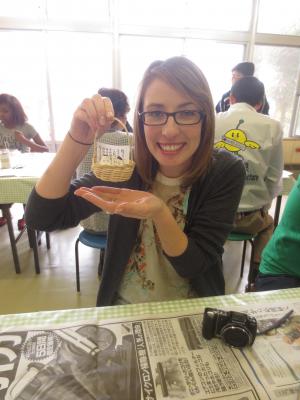Having now lived in Fukushima for over three months I have become accustomed to constant questioning - “Why Fukushima?”, “Aren't you concerned?”, “Your family must be so worried!” - by people around me, often those who live in Fukushima themselves. After participating in the 'study tour' of Aizu and Kitakata and experiencing life within the agricultural community as well as many of the cultural (and culinary!) delights the prefecture has to offer, I can confidently respond with countless reasons why Fukushima is much more than what is currently portrayed in the media. Before March 2011, Fukushima had long been famous for its delicious fruits (especially peaches, pears and apples), rice, vegetables and other agricultural produce. Our tour stopped at the Fukushima Agricultural Technology Centre and a local JA Centre where such agricultural products are tested for levels of radiation prior to being approved for sale throughout Japan and internationally. It was particularly interesting to learn that since the immediate aftermath of the nuclear disaster, levels of radiation recorded in agricultural products have dropped significantly and cases of unsafe levels of radiation are exceptionally rare. Amid much negative press these positive results highlight that the bigger challenge now facing the industry is how to overcome often ill-informed stigma of nuclear contamination. Staying overnight on a cotton farm in the Kitakata region was the highlight of the study tour! We were given a taste of life in agricultural Fukushima by participating in some farm-work and interacting with the very friendly and welcoming family (not to mention being treated to a feast of local produce!). It was obvious from these interactions that, in spite of the many challenges facing agricultural families, there is also much positivity for recovery and unwavering pride for Fukushima within the local community. Throughout the tour we were also introduced to many of the natural and cultural wonders of Fukushima. We enjoyed the beautiful scenery as we drove past snow-capped mountains in Aizu and ate ourselves into a coma eating delicious Kitakata ramen and tasting local sake. We were also taught to make our own 'Okiagari-koboshi' – small dolls which never fail to spring back up when knocked down. Whilst 'Okiagari-koboshi' have a long history in the Aizu region, they hold a whole new level of meaning for the character of Fukushima today. The study tour was a great experience and reminder of how lucky I am to live in such a wonderful part of Japan. Next time I am asked “Why Fukushima?” I will be the one asking the question - “Why not?!” |  |
| Summary |







